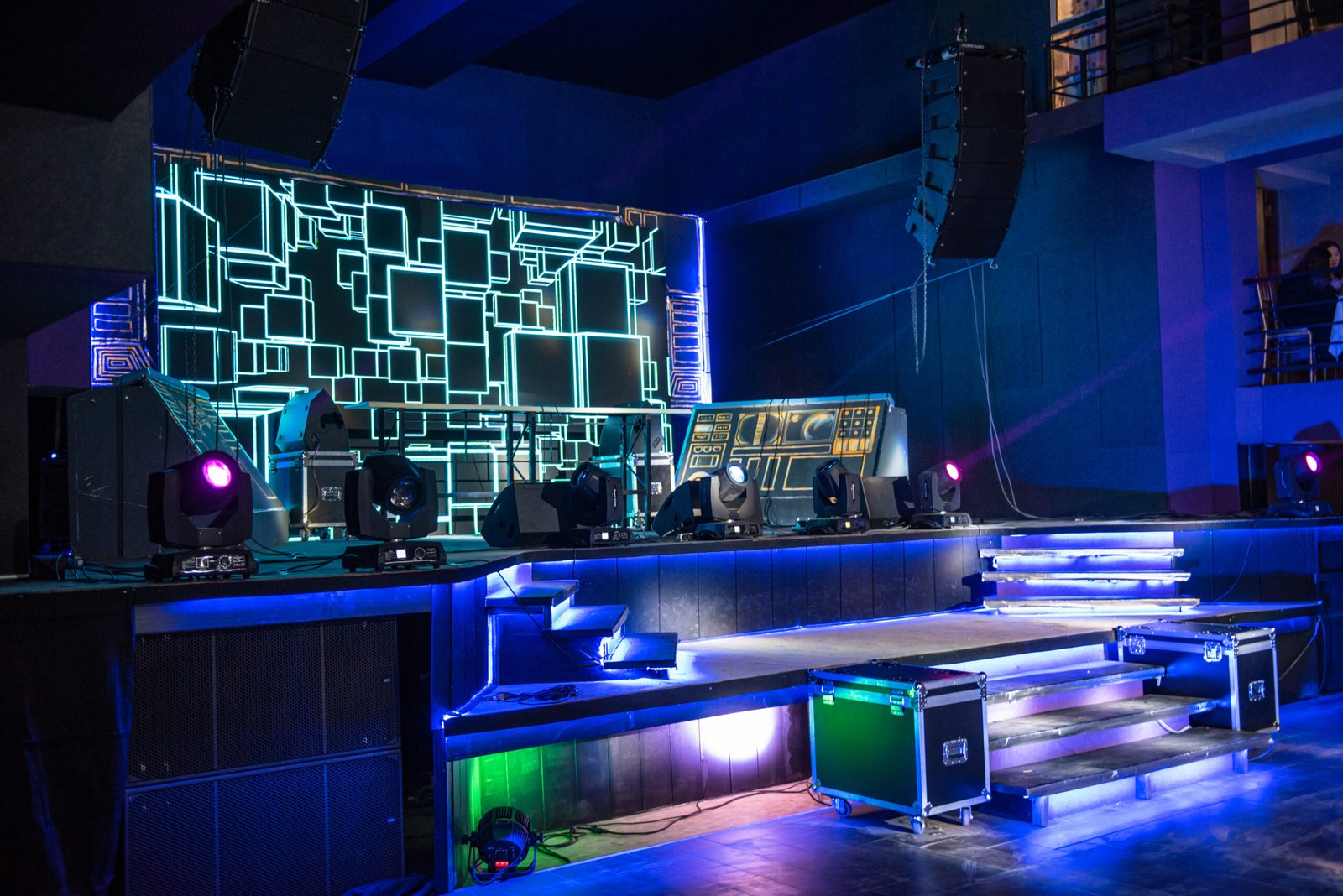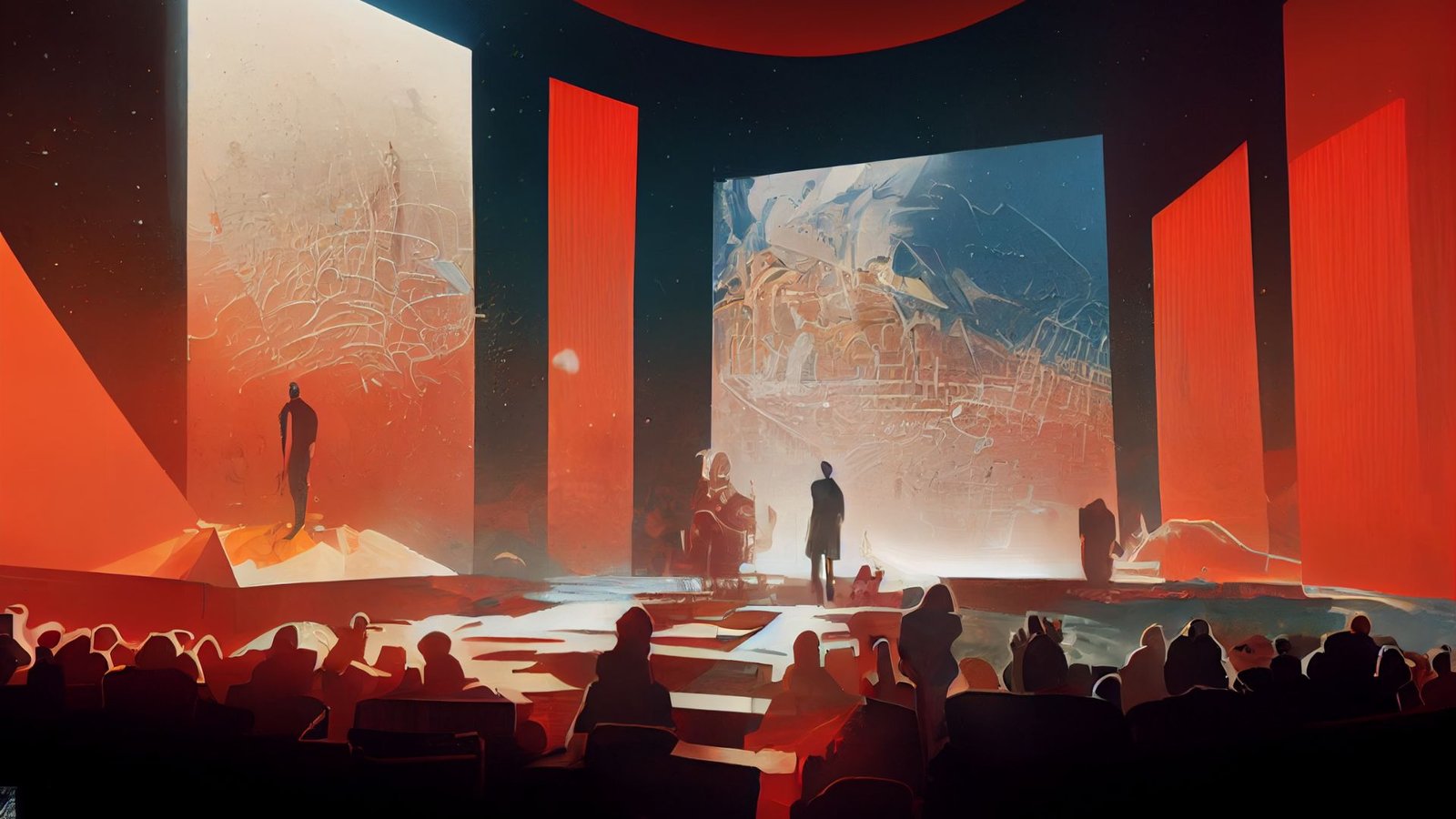To innovate stage design effectively, embracing emerging technologies is crucial. Technologies such as digital projection, augmented reality (AR), and 3D printing offer new possibilities for creating dynamic and immersive environments. For example, digital projection can transform a simple backdrop into a visually stunning scene, while AR can integrate interactive elements that engage the audience in real time. By staying updated with the latest technological advancements, you can incorporate cutting-edge tools into your design, enhancing both the visual appeal and functionality of the stage.

Experiment with Modular and Transformable Set Pieces
Another way to innovate stage design is by experimenting with modular and transformable set pieces. Modular designs allow for flexibility and adaptability, enabling you to reconfigure the set quickly for different scenes or performances. For instance, using interlocking panels or movable structures can facilitate rapid scene changes and create diverse visual effects. Transformable set pieces, such as rotating platforms or adjustable backdrops, add versatility and surprise elements to the design. This approach not only enhances the visual interest but also supports seamless transitions and dynamic storytelling.
Integrate Interactive and Immersive Elements
Integrating interactive and immersive elements is a powerful strategy to innovate stage design. Interactive elements, such as audience participation components or touch-sensitive surfaces, create a more engaging experience by involving the audience in the performance. Immersive design, on the other hand, involves creating environments that fully envelop the audience, making them feel as though they are part of the narrative. Techniques such as 360-degree projections, surround sound, and multi-sensory experiences can transport the audience into the world of the performance, creating a memorable and impactful experience.
Explore Non-Traditional Materials
Exploring non-traditional materials can also contribute to innovative stage design. While traditional materials like wood and fabric are commonly used, incorporating unconventional materials can lead to unique and visually striking results. Consider using materials such as recycled plastics, LED panels, or even organic elements like plants and water. These materials can introduce new textures, colors, and effects, enhancing the overall aesthetic of the stage. By experimenting with different materials, you can push the boundaries of conventional stage design and create a fresh and exciting visual experience.
Collaborate with Artists from Different Disciplines
Collaboration with artists from different disciplines is another effective way to innovate stage design. Working with professionals such as digital artists, architects, and choreographers can introduce new perspectives and ideas into your design process. For instance, a collaboration with a digital artist can lead to the integration of interactive projections, while input from an architect might inspire innovative set structures. Interdisciplinary collaboration fosters creativity and brings diverse expertise to the project, resulting in a more comprehensive and innovative stage design.
Utilize Sustainable Design Practices
Innovating stage design also involves incorporating sustainable design practices. Environmental sustainability is becoming increasingly important, and integrating eco-friendly approaches can set your design apart. Consider using recycled or upcycled materials, implementing energy-efficient lighting, and minimizing waste in your design process. Sustainable practices not only contribute to environmental conservation but also add a unique aspect to your design philosophy. By adopting green practices, you demonstrate a commitment to sustainability while creating innovative and responsible stage designs.
Prioritize Flexibility and Adaptability
Prioritizing flexibility and adaptability in your stage design can significantly enhance its innovation. A flexible design allows for quick adjustments and modifications, accommodating various performance needs and unexpected changes. For example, designing set pieces that can be easily moved or reconfigured ensures that the stage can adapt to different scenes or productions. Additionally, incorporating adaptable lighting and sound systems can further enhance the versatility of your design. Flexibility and adaptability contribute to a more dynamic and responsive stage environment, allowing for creative experimentation and seamless transitions.
Incorporate Unique Visual Themes
Incorporating unique visual themes is an essential aspect of innovating stage design. A distinct theme helps create a cohesive and memorable visual identity for the performance. Explore themes that align with the narrative and add a fresh perspective to traditional designs. For instance, a futuristic theme might feature sleek, high-tech elements, while a fantastical theme could include whimsical, surreal visuals. By developing a unique theme, you create a visually striking stage that captures the audience’s imagination and enhances the storytelling experience.
Conclusion
To innovate stage design, incorporating emerging technologies, experimenting with modular set pieces, and integrating interactive elements are key strategies. Exploring non-traditional materials, collaborating with artists from various disciplines, and utilizing sustainable design practices further enhance the creative potential of your design. Prioritizing flexibility and adaptability, along with incorporating unique visual themes, ensures that your stage design stands out and captivates the audience. By applying these innovative approaches, you can push the boundaries of traditional stage design and create compelling and memorable performances.




